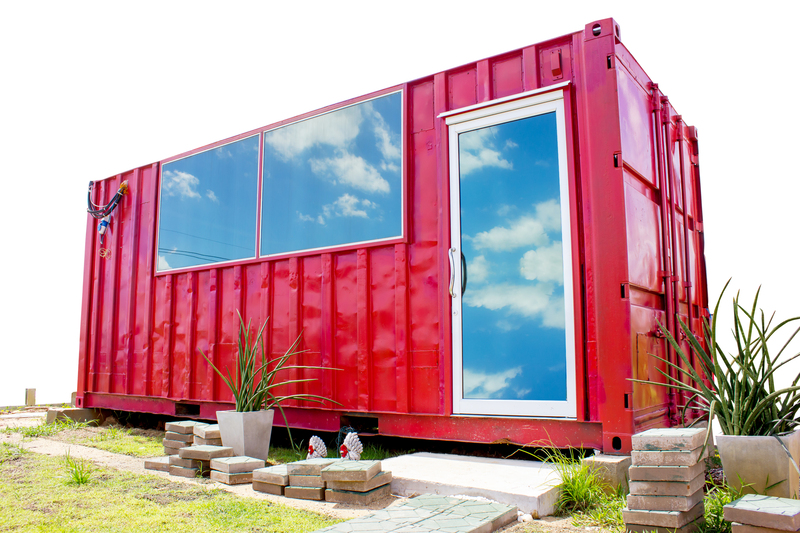The Role of Technology in Advancing Cardboard Disposal Methods
Cardboard is everywhere -- from online shopping boxes on our doorsteps to the packaging that stores staple foods in pantries. As e-commerce and logistics sectors burgeon, we face a growing challenge: how to dispose of and recycle cardboard efficiently? This comprehensive article dives into the crucial role technology has played, and continues to play, in advancing cardboard disposal methods. We'll unpack innovative solutions, discuss their environmental impact, and forecast the exciting future of cardboard waste management.

Understanding the Scale of Cardboard Disposal
Cardboard, specifically corrugated fiberboard, makes up an enormous portion of global municipal solid waste. Estimates from the Environmental Protection Agency (EPA) indicate that millions of tons of cardboard are discarded every year in the United States alone. Despite its recyclability, not all cardboard is reprocessed efficiently. The growing demand for sustainable packaging and the push for zero-waste businesses intensify the need for advanced cardboard disposal solutions.
Key Reasons Efficient Cardboard Disposal Matters
- Environmental sustainability: Reduces landfill use and greenhouse gas emissions.
- Resource conservation: Saves trees, energy, and water.
- Economic benefit: Valuable secondary raw material for manufacturers.
- Cleaner communities: Less litter and better waste management infrastructure.
Evolution of Cardboard Disposal Methods
Traditional methods relied on manual collection and simple recycling facilities. But as cardboard volumes ballooned, especially with the e-commerce explosion, these methods became insufficient. Basic recycling involved sorting, shredding, pulping, and remanufacturing, but inefficiencies plagued the process.
Innovations Shaping Cardboard Waste Management
Let's review how technology has revolutionized the "reduce, reuse, recycle" mantra:
- Automated sorting systems: Powered by AI and optical sensors, these machines identify and direct cardboard to appropriate streams, drastically minimizing contamination.
- Smart recycling bins: IoT-enabled bins monitor fill levels, optimize collection routes, and educate users on proper disposal.
- Robotic collection: Automated guided vehicles (AGVs) and collaborative robots (cobots) help sort and transport cardboard, boosting labor efficiency and safety.
- Advanced pulping technology: Innovative pulping techniques reduce water and chemical use, further lowering the environmental footprint of cardboard recycling.
- Blockchain traceability: Tracing cardboard's journey from disposal to recycled product ensures authenticity and fosters circular economy participation.
Smart Collection and Transportation: The Backbone of Efficient Cardboard Handling
For decades, the most labor-intensive stage in cardboard waste disposal was collection and transportation. Technology now enables smarter, greener, and more cost-efficient processes:
Internet of Things (IoT) Integration
Smart bins outfitted with IoT sensors provide real-time data on fill levels, ensuring collection only when necessary. This reduces truck journeys, slashing fuel consumption and emissions. Additionally, GPS and AI route-optimization tools help waste management companies plan the shortest, least polluting collection paths, saving money and reducing traffic congestion.
- Predictive analytics: Software predicts peak waste periods, adjusting pickups accordingly.
- Mobile notifications: Residents and businesses receive reminders, boosting participation in recycling programs.
Automated Sorting and Processing Facilities
Sorting centers have embraced robotics and artificial intelligence to transform cardboard disposal technologies. Modern Material Recovery Facilities (MRFs) deploy conveyor belts, optical sorters, and intelligent robots. These quickly separate cardboard from plastics, metals, and other contaminants, improving the purity of recycled materials.
AI-Powered Vision Systems
- Optical scanners and machine learning algorithms instantly recognize cardboard even when mixed with other recyclables.
- Robotic arms withdraw non-cardboard contaminates, reducing manual labor and errors.
- Improved detection of waxes, inks, and coatings allows for better downstream processing.
Benefits of Automated Sorting in Cardboard Recycling Technologies
- Higher recovery rates: More cardboard stays in the recycling stream.
- Lower labor costs: Factories run with fewer workers, redirecting talent to skilled positions.
- Reduced workplace injuries: Automation minimizes repetitive strain and accidents.
- Faster processing: Facilities handle more volume at a higher speed.
Advanced Cardboard Recycling Technologies
Compared to conventional methods, today's recycling plants employ eco-friendly and resource-conserving processes. Here are the latest advancements that are changing cardboard disposal solutions for the better:
Closed-Loop Recycling Systems
These systems ensure that recycled cardboard is remanufactured into new cardboard products, creating a circular supply chain. With advanced filtration technology, even contaminated or colored cardboard can be processed, reducing industrial waste.
Enzyme-Based Pulping
Traditional pulping relies on harsh chemicals, but enzyme-based pulping uses biological catalysts to break down fibers. This process is more sustainable, requiring less water and producing fewer byproducts.
High-Efficiency De-inking Technology
State-of-the-art flotation and washing technologies remove inks and adhesives from cardboard waste, yielding a cleaner pulp and higher quality recycled product.
Eco-Friendly Additives and Treatments
Nanotechnology and green chemistry introduce biodegradable or water-resistant treatments that improve cardboard durability while keeping it recyclable. This minimizes contamination concerns and increases the recyclability of a broader range of packaging materials.
Digital Tools and the Circular Economy
Technology doesn't just touch the physical side of cardboard disposal. Digital platforms provide critical infrastructure to track, optimize, and educate throughout the cardboard lifecycle.
- Blockchain for Traceability: Ensures each cardboard batch is logged through collection, recycling, and remanufacturing stages, preventing "greenwashing."
- Data Analytics Platforms: Utilities and recycling firms leverage Big Data to forecast waste streams and respond proactively.
- Online Marketplaces: Digital platforms connect businesses with recycled cardboard producers, boosting demand for sustainable materials.
- Educational Apps: Teach consumers and companies about responsible cardboard use and disposal, encouraging better habits.
Tech-Driven Cardboard Alternatives
In some cases, technology helps reduce the need for traditional cardboard altogether by introducing innovative materials:
- Bio-based packaging: Developments in bioplastics and plant-based fibers lead to compostable packaging solutions. These mimic cardboard's strength but degrade far more quickly in composting facilities.
- 3D printing: This technique enables on-demand fabrication of packaging alternatives using recycled or biodegradable content, reducing waste at its source.
- Smart packaging: Embedded sensors alert shippers and receivers about the condition or location of packages, minimizing the need for over-packaging and ensuring cardboard is reused more frequently before disposal.
Environmental Impact of Technological Advancements in Cardboard Disposal
As cardboard recycling becomes more sophisticated, its environmental impact is considerably reduced. Here's how modern cardboard disposal technologies benefit our planet:
- Lower landfill use: More cardboard is recycled, diverting waste from landfills and slowing their growth.
- Reduced deforestation: Using recycled fibers decreases demand for fresh wood pulp, preserving forests.
- Energy and water savings: Advanced recycling techniques are more resource-efficient than producing new cardboard from virgin materials.
- Cleaner air and water: Enhanced pulping and de-inking technologies reduce emissions and water pollution.
Lesser-Known Benefits of Technological Integration
- **Improved data accuracy**: IoT and AI-powered facilities provide real-time data, fostering more responsive and responsible waste management policies.
- **Greater transparency**: Blockchain and smart contracts reassure stakeholders and consumers about recycling authenticity.
- **Increased participation**: Gamified apps and smart bins nudge users to recycle more diligently, driving up collection and recycling rates.
Challenges Facing Technology-Driven Cardboard Disposal
Despite technological progress, obstacles remain:
- High upfront costs: Robotics, AI, and IoT devices require significant investment, which can be prohibitive for smaller municipalities or recycling providers.
- Infrastructure disparities: Developing nations or remote areas may lag behind in adopting high-tech cardboard disposal solutions.
- Consumer confusion: With increasing packaging complexity, users may struggle to correctly sort and dispose of specialized cardboard materials.
- Material innovation risk: New sustainable materials must be compatible with existing disposal and recycling technologies.

The Future: Smart Cities and Circular Packaging
What's next for technology in cardboard disposal methods? The future promises harmonization of urban development with sustainability goals. We can anticipate:
- Fully integrated urban recycling systems -- leveraging real-time data, robotics, and predictive analytics for seamless waste management.
- On-demand recycling centers -- mobile or modular facilities that process cardboard where it's produced, minimizing transport emissions.
- AI-powered policy tools -- governments will harness advanced modeling to forecast recycling trends and optimize infrastructure.
- Consumer empowerment -- apps, social media, and gamified platforms will educate and incentivize participation in the cardboard recycling ecosystem.
As more companies and governments commit to sustainable practices, technology's place in effective cardboard disposal and recycling only looks to grow.
Conclusion: Technology -- The Key to a Sustainable Cardboard Lifecycle
From smart bins to blockchain and AI-augmented sorting lines, technological innovations have fundamentally reshaped how we manage cardboard disposal. These solutions reduce environmental impact, conserve resources, and drive both economic and social benefits. Although challenges persist, continued investment in research, digital tools, and public engagement ensures that advanced cardboard waste management will play a pivotal role in meeting our sustainability goals. As consumers, businesses, and policymakers, embracing these novel technologies is not just necessary -- it's the foundation for a cleaner, greener future.